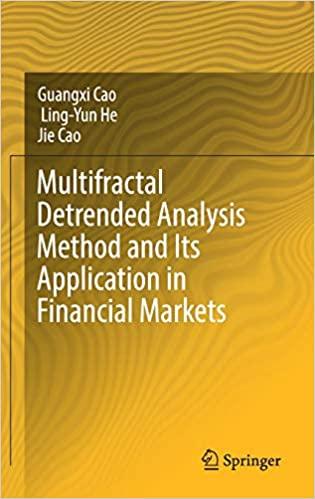Only need the work to answer question #2.

Calculate NPV and IRR for each process. What is your recommendation? Table 5.1 Income statement and book rates of return for low-temperature extraction of hydrated zirconium ($ thousands) Year 1. Revenue 2. Operating costs 3. Depreciation 4. Net income 5. Start-of-year book value 6. Book rate of return (4+5) 8.2% 9.8% 12.2% 16.4% 49.1% 557.140 per year. "Rounded. Straight-line depreciation over seven years is 400/7 - 57.14. Capital investment is $400,000 in year 0 Table 5.2 Income statement and book rates of return for high-temperature extraction of hydrated zirconium ($ thousands) Year 1. Revenue 2. Operating costs 3. Depreciation 4. Net income 5. Start-of-year book value 6. Book rate of return (4.5) 7.5% 9.4% 12.5% 18.75% Straight-line depreciation over five years is 40075 - 80 or $80.000 per year. Capital investment is $400.000 in year 0. CFO: Why do these engineers always have a bright idea at the last minute? But you've got to admit the high-temperature process looks good. We'll get a faster payback, and the rate of return beats Vegetron's 9% cost of capital in every year except the first. Let's see, income is $30,000 per year. Average investment is half the $400,000 capital outlay, or $200,000, so the average rate of return is 30,000/200,000, or 15%-a lot better than the 9% hurdle rate. The average rate of return for the low-temperature process is not that good, only 28,000/200,000 or 14%. Of course, we might get a higher rate of return for the low-temperature proposal if we depreciated the investment faster-do you think we should try that? You: Let's not fixate on book accounting numbers. Book income is not the same as cash flow to Vegetron or its investors. Book rates of return don't measure the true rate of return CFO: But people use accounting numbers all the time. We have to publish them in our annual report to investors. Your Accounting numbers have many valid uses, but they're not a sound basis for capital investment decisions. Accounting changes can have big effects on book income or rate of return, even when cash flows are unchanged. Here's an example. Suppose the accountant depreciates the capital investment for the low-temperature process over six years Page 133 rather than seven. Then income for years 1 to 6 goes down because depreciation is higher. Income for year 7 goes up because the depreciation for that year becomes zero. But there is no effect on year to year cash flows because depreciation is not a cash outlay. It is simply the accountant's device for spreading out the recovery of the up-front capital outlay over the life of the project. CFO: So how do we get cash flows? Your In these cases, it's easy. Depreciation is the only noncash entry in your spreadsheets Tables 5.1 and 5.2), so we can just leave it out of the calculation. Cash flow equals revenue minus operating costs. For the high-temperature process, annual cash flow is Cash flow = revenue - operating cost = 180 - 70 = 110, or $110,000 CFO: In effect you're adding back depreciation because depreciation is a noncash accounting expense. Your Right. You could also do it that way: Cash flow = net income + depreciation = 30 + 80 = 110, or $110,000 CFO: Of course. I remember all this now, but book returns sem important when someone shoves them in front of your nose. You: It's not clear which project is better. The high-temperature process appears to be less efficient. It has higher operating costs and generates less total revenue over the life of the project, but of course, it generates more cash flow in years I to S. CFO: Maybe the processes are equally good from a financial point of view. If so, we'll stick with the low-temperature process rather than switching at the last minute. Yowe We'll have to lay out the cash flows and calculate NPV for each process CFO: OK, do that. I'll be back in a half hour and I also want to see cach project's true, DCF rate of return. QUESTIONS 1. Are the book rates of return reported in Tables 5.1 and 5.2 useful inputs for the capital investment decision? 2. Calculate NPV and IRR for each process. What is your recommendation? Be ready to explain to the CFO









